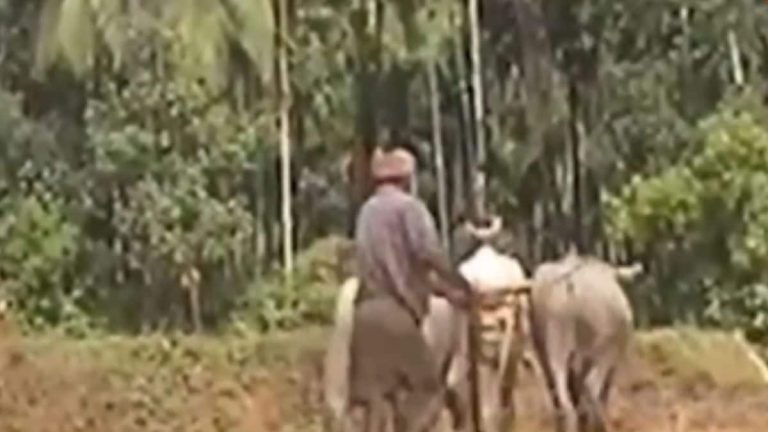Last updated:

This farming method involves the entire community.
This collective effort involves not only agriculture but also maintaining social bonds and cultural traditions.
Do you know how traditional rice cultivation was done in the past? In the Dakshin Kannada region, traditional rice cultivation was once a deep-rooted communal and ritual practice. This farming method brings the entire community together during the rice growing season. The process begins with the use of oxen or buffaloes to plow the fields, a task that is not only labor intensive but also the focus of community collaboration. After plowing, women and children take on the important role of growing rice, often accompanied by singing traditional songs and sharing folklore related to agriculture. This collective effort involves not only agriculture but also maintaining social bonds and cultural traditions.
This traditional agricultural practice of the Dakshin Kannada people has a strong sense of community. With the arrival of planting season, families from all over the town would gather to work in the fields. Planting trees is not only a physical job, but also a celebration. The women not only sing but also have lively conversations with their neighbors. The use of oxen for threshing and plowing is a key element of traditional methods that help to promote the agricultural rhythm of the region.
The arrival of mechanized agriculture has greatly changed this traditional appearance. Modern machines can now handle many tasks once performed by hand, such as tilling, planting and harvesting. This shift reduces the role of public labor and the cultural practices that come with it. Mechanization has led to a more isolated approach to farming, reducing opportunities for communal interaction that was once central to the agricultural process. The traditional kudu family system, which emphasizes shared agricultural responsibilities among extended family members, is also in decline. The introduction of machinery made farming more orderly, but it also led to the loss of traditional practices and community bonds that were integral to Dakshin Kannada rice cultivation.
